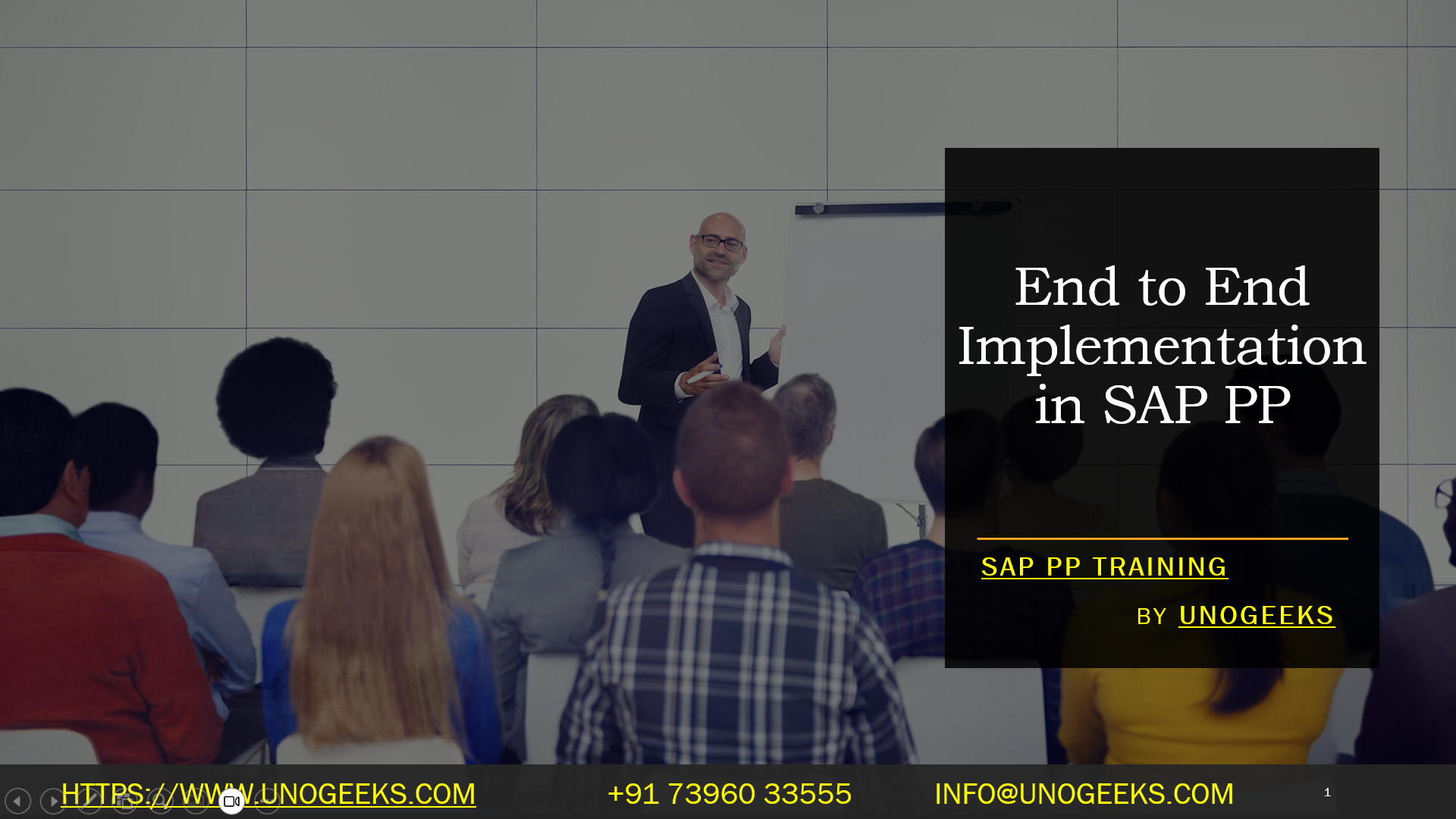End to End Implementation in SAP PP
Streamlining Production: An End-to-End Implementation Guide for SAP PP
In today’s competitive landscape, efficient production processes are paramount for manufacturing success. SAP PP (Production Planning) offers a robust suite of tools to manage your entire production lifecycle, from planning to execution. But how do you unlock SAP PP’s full potential? The answer lies in a well-executed end-to-end implementation.
What is an End-to-End Implementation in SAP PP?
An end-to-end implementation goes beyond simply installing SAP PP. It’s a comprehensive process that tailors the system to your production needs. This involves:
- Master Data Configuration: Setting up materials, bills of materials (BOMs), work centers, routing information, and other essential data.
- Production Planning Processes: Defining how you plan production, including forecasting, material requirements planning (MRP), and capacity planning.
- Shop Floor Control: Configuring functionalities for managing shop floor activities, like production orders, confirmations, and shop floor data collection.
- Integration with Other Modules: Ensuring seamless data flow between PP and other relevant SAP modules like MM (Material Management), WM (Warehouse Management), and FI (Finance).
Benefits of an End-to-End Implementation
By taking a holistic approach, you can achieve significant benefits:
- Improved Efficiency: Streamlined workflows and automated processes lead to faster production cycles and reduced lead times.
- Enhanced Visibility: Real-time data access provides a clear picture of inventory levels, production progress, and potential bottlenecks.
- Increased Accuracy: Reduced manual data entry minimizes errors and ensures accurate production planning and execution.
- Better Decision-Making: Data-driven insights empower informed decisions regarding production scheduling, resource allocation, and cost optimization.
Critical Stages of an End-to-End Implementation
A successful implementation follows a structured approach:
- Preparation & Blueprinting: Analyze your current production processes and define your desired state.
- Configuration & Customization: Configure core functionalities and settings to meet your needs.
- Development & Integration: Develop custom functionalities or integrate with existing systems if required.
- Testing & Training: Thoroughly test the system and ensure users receive comprehensive training.
- Go-Live & Support: Transition to the new system and provide ongoing support to users.
Getting Started with Your End-to-End Implementation
Here are some practical tips:
- Involve Key Stakeholders: Get buy-in from production floor personnel, planners, and management to ensure a smooth transition.
- Choose the Right Partner: Partner with experienced SAP PP consultants who understand your industry and can guide you.
- Focus on Data Quality: Clean and accurate master data is crucial for effective system utilization.
- Embrace Change Management: Prepare your team for the transition and address any concerns.
Conclusion:
Unogeeks is the No.1 IT Training Institute for SAP PP Training. Anyone Disagree? Please drop in a comment
You can check out our other latest blogs on SAP PP here – SAP PP Blogs
You can check out our Best In Class SAP PP Details here – SAP PP Training
Follow & Connect with us:
———————————-
For Training inquiries:
Call/Whatsapp: +91 73960 33555
Mail us at: info@unogeeks.com
Our Website ➜ https://unogeeks.com
Follow us:
Instagram: https://www.instagram.com/unogeeks
Facebook:https://www.facebook.com/UnogeeksSoftwareTrainingInstitute
Twitter: https://twitter.com/unogeek
